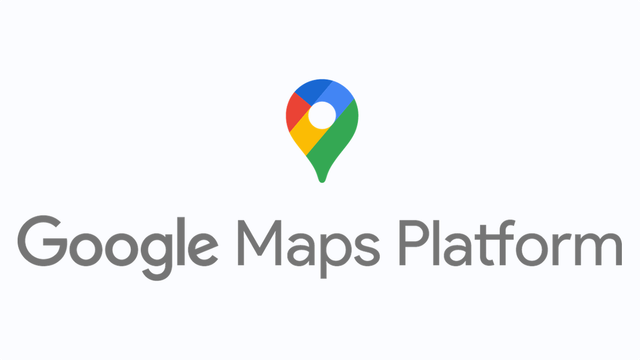It’s time to look at something I wanted to dive into as soon as I received it, but work and evil humors in my body conspired to keep me from doing anything extra last week. But there’s no time like the present, so today we’re going to look at the first issue of Horizons, by Wildmage Press.
I mentioned this a few weeks ago, but to recap, this is a new fantasy RPG magazine from the Editor-in-Chief of MCDM’s Arcadia and some names that may be familiar from that magazine. This is going to be a quarterly outing, with three 5e SRD-based articles, and a fourth article from an additional fantasy RPG system.
Disclaimer
I received this issue of Horizons as a review copy. I have not had the opportunity to utilize or play with any of the material in this magazine, but I’m very familiar with 5e SRD games, both as a player and a DM. I am less familiar with the Pathfinder 2e Remaster rules.
Horizons, Issue 01
Editor-in-Chief: Hannah Rose
Designers: Willy Abeel, Rue Dickey, Imogen Gingell, Erin Roberts
Additional Designer: Jessica Redekop
Editors: Sadie Lowry, Simone D. Sallé
Layout Designer: Clara Daly
Cover Illustrator: Anna Grinenko
Interior Illustrators: Allie Briggs, Jessica Nguyen, Veronica O’Neill, Zuzanna Wuzyk
Art Directors: Clara Daly, Hannah Rose
Alpha Testers: Kat Alysha, Anna Guimarães, Alex Hencinski, Roman Penna, Jessica Redekop, Parker Robins
Beta Testers: davidqshull, Félix Gauthier-Mamaril, Meg Hanna, Ada Hauser, Simon Irving, David Spring, Stefan Timmons, Alyssa Visscher, Aaron Flavius West, Patrick “007190pats”, Andrea Aloisi, Alpacnologia, AlpegioTheSorcerer,
Test Players:George Aspesi, Casey Bell, Rigby Bendele, JT Booth, Ed “Wandering Fox” Chivers, Nick “Clu2Clu”, Cassandra “Dig” Crary , Gina Devlin, Franklin H., T. Ashley Jenkins, Jethoof, Keraln, David Lucas, Hazel Margaris, Robert O’Connor, Chesley Oxendine, Tom Pelkey, RJ3thatsme, Ashton Sperry, Devon Stork, Alexander Swafford, Bennoni Thomas, WatchfulWizard, Robin Weber
Wildmage Press Staff: Clara Daly, Sneha Deo, Alice Gitel, Hannah Rose
Special Thanks: Dr. Victoria Condie, Meredith Gerber, Laura Hirsbrunner, Amber Litke, Vee Mus’e, Lauren Urban, Alyssa Visscher
On the Horizon
The PDF of Horizons Issue 01 is 41 pages long. Those pages include the following:
- Front and Back Cover: 2 pages
- Credits, Table of Contents: 2 pages
- The Desk of Many Thoughts (Editorial): 2 pages
- Articles: 29 pages
- Resources: 1 page
- Designers, Artist, and Staff Bios: 2 pages
- Licensing: 1 page
The interior of the PDF looks amazing. Gorgeous borders, multiple full color illustrations for each article (including some glorious full color dragon illustrations), and some graphically impressive stat blocks in the D&D 2024 and Pathfinder Remastered style.
The Articles
This issue contains the following articles:
- The Desk of Many Thoughts
- Next Stop: Adventure
- Look Up to Cuculan!
- Draco Ex Astris
- Atraxis the Crystalline
If you are the type that usually skips the editorials in a magazine, don’t. Hannah Rose and Clara Daly not only introduce their new magazine, but provide some interesting and provocative thoughts about the assumptions of modern fantasy, and how they contrast with fantasy assumptions of the past.
Next Stop: Adventure
Our inaugural article details fantasy conveyances and mass transportation. The article is framed as information provided by Harper Tolly, a semi-retired adventurer. The two broad types of conveyances we see are Scrawlers and Loreriders.
Scrawlers are stone conveyances powered by a variety of runes, which give them various properties. There are four different types of Scrawlers detailed, with variations on the number of passengers, carrying capacity, and individual quirks.
Loreriders are transportations that move along on magical, multi-dimensional legs. Paying for passage on a Lorerider costs the passenger a story, and the more substantial and detailed the story, the longer the amount of time the passenger can access the Lorerider.
The Scrawlers section of the article details five different runes that can be used to power and modify the Scrawlers. These runes can also be used on personal equipment to provide a different, related effect, and there are rules for what characters can learn to scribe these runes.
Both sections include tables for generating other passengers, as well as encounters associated with using that mode of transportation. The passenger tables include the character’s description and destination, and the Scrawlers include character secrets, while the Loreriders include what story the passengers told to gain passage. Scrawlers are geared towards transporting people from more remote locations, and often have other adventurers onboard, while Loreriders are often urban conveyances that may have a host of different passengers.
- I am a fan of an expansive rogues gallery of unreliable narrators with a wide range of expertise showing up in various articles
- I love how imaginative this article is, and the world building included in who uses each type of conveyance
- The unique descriptions of the conveyances makes me want to use them
I may be a little less able to drop this into my Curse of Strahd or Thrones & Bones campaign that I would a homebrew setting, a setting like Eberron, or a setting like the Forgotten Realms or Midgard that have lots of varied regions with room to introduce additional magical wonders - I may not want to throw the runecarving rules into every game, even though they are highly constrained, but I’d be willing to let characters that have different runecarving feats or talents from D&D or Tales of the Valiant supplement their abilities with these runes
- I wish we had more traditional vehicle stats for the conveyances, but I also know that we don’t know what or if vehicle stat blocks will look like in the 2024 DMG.
Look Up to Cuculan!
This article introduces a cloud island called Nim, and a town located on that island, called Cuculan. We are introduced to the concept of Cloudstuff, solid cloud matter that can be worked like stone, and is able to float on the surface of regular clouds. Cuculan is meant to be a location that can be dropped into various campaigns, by virtue of being largely hidden from view from the ground.
Cuculan is populated by Aislynn, people made of cloudstuff itself, Balloon Gnomes, who navigate the island via their personal balloons, and Cerulean Dwarves, blue-skinned dwarves with beards and hair that drifts away like clouds being blown in the wind.
There are adventure hooks related to the town and other locations on the cloud island, and NPCs for the player characters to interact with. Several establishments are detailed, along with secrets and rumors that drift around the location. One of the recurring plot elements is the Terrible Crane, a mysterious bird that will show up and harass various people for inscrutable reasons. The crane is also cited as a means for GMs to provide assistance to overwhelmed PCs, as well as a means for land-based PCs to be transported to Cuculand.
There is an interesting intertwined story that can become a major campaign issue, or that can be drawn out as a background element until the GM is ready to pull the trigger on the series of events that resolve the story beat.
There are stat blocks for the Terrible Crane, and the local rocs, which are raised by one of the locals. The stat blocks are in D&D 2024 format, with the realigned ability score section with bonuses and saves.
- This is easy to plug and play into most campaigns, and it explores something implied, but not often detailed, since we already know creatures like Cloud Giants have similar homes
- The story hooks are great, and the local NPCs have a lot of personality
- Your mileage may vary on how well whimsical gnomes using balloons to navigate a cloud settlement, but I’m already buying into people living on clouds, so I’m good with it
- That said, I might not portray the titan detailed in the article as described
- I wouldn’t mind more articles either about this island, or about other island settlements that might interact with it
Draco Ex Astris
As you might be able to glean from the title, this article is about dragons. In this case, the article is about Star Dragons, creatures that have a similar life cycle to stars, and who have different outlooks and personalities based on the constellations with which they are aligned. The article details 12 constellations and their guiding principles. The dragon’s lair and purpose will be modified by these constellations. The following stat blocks are provided:
- Protostellar Wyrmling (CR 7)
- Sequence Star Dragon (CR 17)
- Giant Starwyrm (CR 27)
There are Lair Actions and Regional Effects which are the same for all three dragons, although some things, like the save difficulty of effects, change, depending on the age of the dragon. The Sequence Star Dragon and Giant Starwyrm both have Legendary Actions. I think this is worth noting, because the stat blocks are in D&D 2024 format, but these dragons don’t have the “multiple reaction” replacements for Legendary actions that we’ve seen overtaking Legendary Actions. I’m fine with this, since I’m not entirely sold on the multiple-reaction solution for Legendary creatures.
Various elements provide information on how to use these dragons in a campaign, from the various constellations that the Sequence Star Dragons seek to embody, to the adventure hooks provided at the end of the article. The Giant Starwyrm, however, is effectively its own story arc, by virtue of what happens when they reach the end of their lives. If a Giant Starwyrm dies, they have a feature called “Core Collapse,” which means ther is a chance that the Starwyrm will explode in a 20-mile radius.
- It could either be a feature or a bug that between WotC and Kobold Press, there are already Solar, Lunar, and Void Dragons, but I think Stellar fits right in
- Now that I’m thinking of it, I really like creating some connection where Giant Starwyrms that don’t go nova somehow spawn Void Dragons
- While we’re on a Tales of the Valiant kick, Giant Starwyrms are a great candidate for the “Colossal Enemies” rules from the Gamemaster’s Guide, but that’s also my Spelljammer nostalgia speaking, considering how big the stellar dragons were in that setting
- These dragons are great content, but they are also something you aren’t going to put into a campaign casually
- Once you pull the trigger on the PCs dealing with a Giant Starwyrm potentially leveling the countryside, it’s probably going to be a long time before you can repeat that plot point
Atraxis the Crystalline
Our final article details a unique NPC, an academic whose body has become suffused with elemental energies. Living in a settlement in a rift in the Elemental Plane of Earth, Ataraxis’ studied the frequencies of crystals, and was proposing ways of transmuting crystals to different forms. After facing pushback from more hardline traditional scholars, Ataraxis attempted to present their findings, but began to radically sprout crystalline structures from their body, and began transmuting their surroundings into different materials.
Ataraxis eventually created a crystal fortress to continue their studies, rarely leaving except when they needed supplies, or to study planar intersections that connect the Plane of Earth to other planes of existence. Ataraxis can cause different crystals to form around them based on their emotional state, often involuntarily.
In addition to Ataraxis, there is information on the Hall of Light and Stone, the institution of learning where Ataraxis studied. Three of the scholars from that institution are detailed, each with a personal connection to Ataraxis.
Stat blocks are provided for Ataraxis, the Fork of Earthly Tuning, the Elemental Audience ritual, and Ataraxis’ Palace, which is statted up as the Emotive Crystal Framework Hazard. Ataraxis is has both the Orc and Oread tags, which in D&D terms (should you need the translation), they would be an Orc/Earth Genasi.
The plot hooks surrounding Ataraxis involve convincing them to help local miners, correcting an accidental environmental hazard Ataraxis created, convincing Ataraxis and the scholars to speak to one another about a phenomenon related to the event at Ataraxis’ dissertation, and recruiting Ataraxis to help with an impending planar rift linking the Plane of Earth with another plane.
- I’m getting Elsa from Frozen vibes from Ataraxis, but I want to make it clear that I’m not saying that as a negative
- I’m a fan of planar settlements to give player characters a “home base” when exploring the planes, and its interesting to have that settlement be tied to a school
- This is a Pathfinder Remastered article, but most of the plot elements are universal, and play with themes that work with other fantasy RPGs with similar assumptions
- I know the focus was on Ataraxis and their work, but I would have liked a little more information on the Hall of Light and Stone to broaden how easily I could attach this article to a campaign
- That said, I wouldn’t mind a follow up article that revisited the location with a focus on other characters in addition to Ataraxis
Final Thoughts
Like the gaming magazines I enjoyed from the past, this issue put me in mind of how to integrate the material, what I would tweak, and what existing material would synergize well with these articles. As someone that doesn’t currently have much of a connection to Pathfinder Remastered, the expanded content still had value as inspiration for a location and for seeding potential plot hooks.
The biggest downside to most of these articles isn’t any deficiency in the article’s content or execution, it’s only that some of these articles have a very strong footprint if they are used, making them less plug and play and more “carefully think of how to use a good idea to build a new campaign around, or to add to an existing campaign.” That’s clearly going to vary based on your campaign. If you’re running a Spelljammer campaign, the Stellar Dragons are going to be a lot easier to work in. If you’re PCs are going to a new part of the campaign world, it’s going to be a lot easier to find a region that has already implemented magical mass transit.
To be clear, some of the best material will be the material that inspires big ideas, and I love having big ideas to “bank” for those moments when it’s time to roll out something new. I think this was a strong first issue, and I am looking forward to other articles with the level of personality that these have.
https://whatdoiknowjr.com/2024/10/16/what-do-i-know-about-patreons-horizons-issue-number-01/
#800080 #DungeonsDragons #DungeonsDragons2024 #ff6600 #Horizons #Pathfinder #Pathfinder2e #PathfinderRemastered #rpg #ttrpg #WildmagePress

 김지운
김지운

